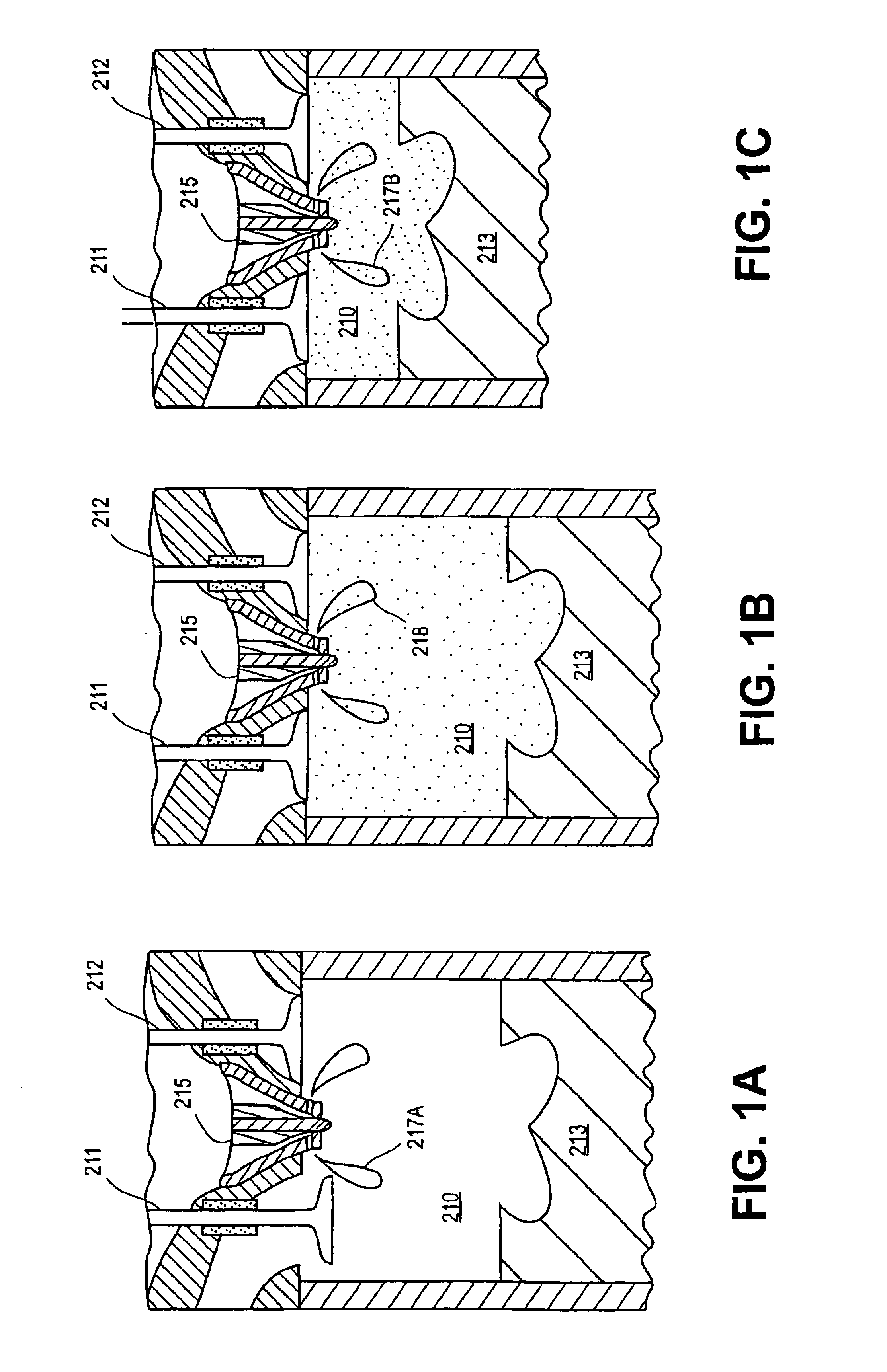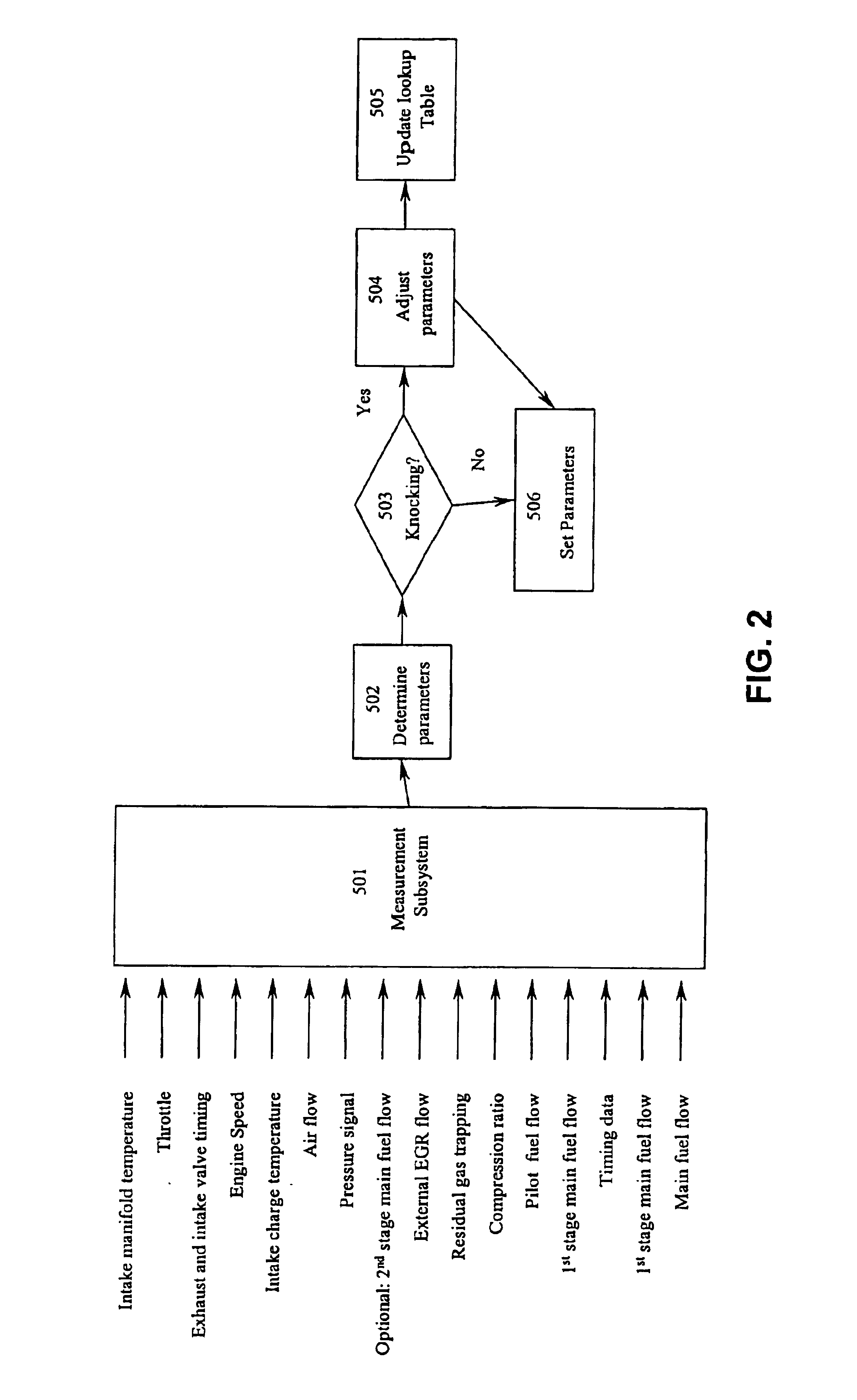Method and apparatus for pilot fuel introduction and controlling combustion in gaseous-fuelled internal combustion engine
a technology of gaseous fuel and internal combustion engine, which is applied in the direction of fuel supply apparatus, drinking water installation, and fluid removal, etc., can solve the problems of affecting the efficiency of the engine, and the rapid release of fuel energy, so as to improve efficiency and reduce emissions.
- Summary
- Abstract
- Description
- Claims
- Application Information
AI Technical Summary
Benefits of technology
Problems solved by technology
Method used
Image
Examples
Embodiment Construction
)
[0053]In a preferred method, fuel is injected into the cylinder of a four-stroke internal combustion engine having at least one reciprocating piston and a crankshaft associated with the piston. In this disclosure, the position of the piston within the cylinder is described with reference to crank angle degrees before or after top dead center (TDC). The piston is at TDC is when the piston has reached the end of an upward stroke and is about to begin a downward stroke (that is, the point when the piston is closest to the cylinder head).
[0054]The method involves a main fuel, which is preferably a gaseous fuel such as, for example, natural gas, propane, bio-gas, landfill gas or hydrogen gas. The method can further comprise the use of an ignition source to control the combustion timing of the main fuel. The ignition source can be, for example, a pilot fuel that auto-ignites more readily than the main fuel, a hot surface ignition source, such as a glow plug, a spark plug, or other known ...
PUM
 Login to View More
Login to View More Abstract
Description
Claims
Application Information
 Login to View More
Login to View More - R&D
- Intellectual Property
- Life Sciences
- Materials
- Tech Scout
- Unparalleled Data Quality
- Higher Quality Content
- 60% Fewer Hallucinations
Browse by: Latest US Patents, China's latest patents, Technical Efficacy Thesaurus, Application Domain, Technology Topic, Popular Technical Reports.
© 2025 PatSnap. All rights reserved.Legal|Privacy policy|Modern Slavery Act Transparency Statement|Sitemap|About US| Contact US: help@patsnap.com



